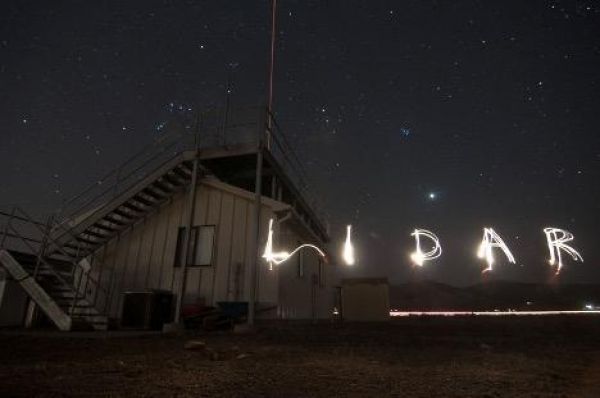Twice a day, at dusk and just before dawn, a faint layer of sodium and other metals begins sinking down through the atmosphere, about 90 miles high above the city of Boulder, Colorado. The movement was captured by one of the world’s most sensitive “lidar” instruments and reported Tuesday in the AGU journal Geophysical Research Letters.
The metals in those layers come originally from meteoroids blasting into Earth’s atmosphere, which bring an unknown amount of material to earth; and the regularly appearing layers promise to help researchers understand better how earth’s atmosphere interacts with space, ultimately supporting life.
“This is an important discovery because we have never seen these dusk/dawn features before, and because these metal layers affect many things. The metals can fall into the ocean and act as fertilizer for ecosystems, the ionized metals can affect GPS radio signals….” said Xinzhao Chu, CIRES Fellow, CU Boulder professor of Aerospace Engineering Sciences, and lead author of the new assessment.
It is the first time that the metal layers have been seen so regularly at these extreme heights in the atmosphere. Such high-altitude metal layers were discovered by Chu’s group just 10 years ago above McMurdo, Antarctica, but there they occur more sporadically. Above Boulder, they’re consistent, daily, and synched with high-atmospheric “tidal winds” created by the sun’s periodic appearance. To understand those winds, the research team relied on data from NASA’s ICON satellite.
Read more at University of Colorado at Boulder
Image: The word "LIDAR" was created using a flashlight. (Credit: Zhibin Yu/CIRES, CU Boulder, Harbin Institute of Technology)


